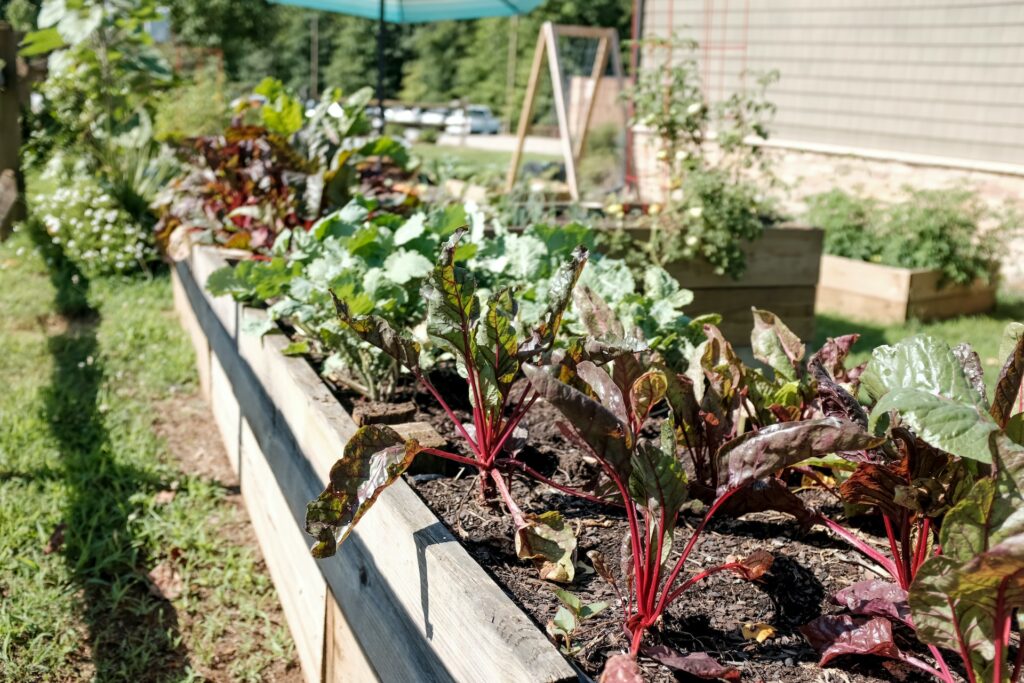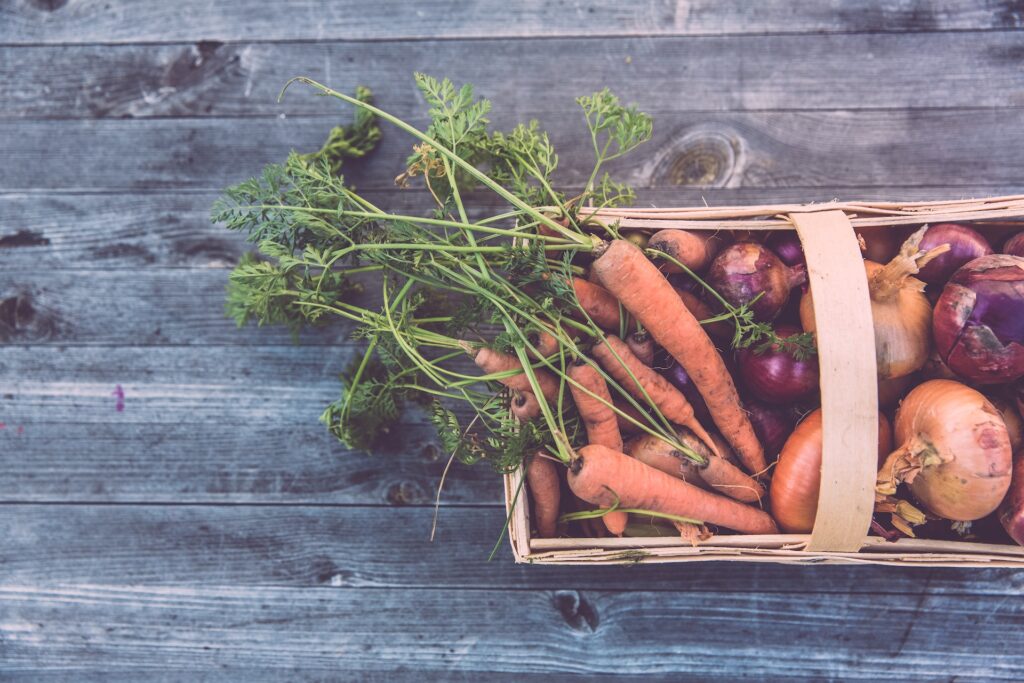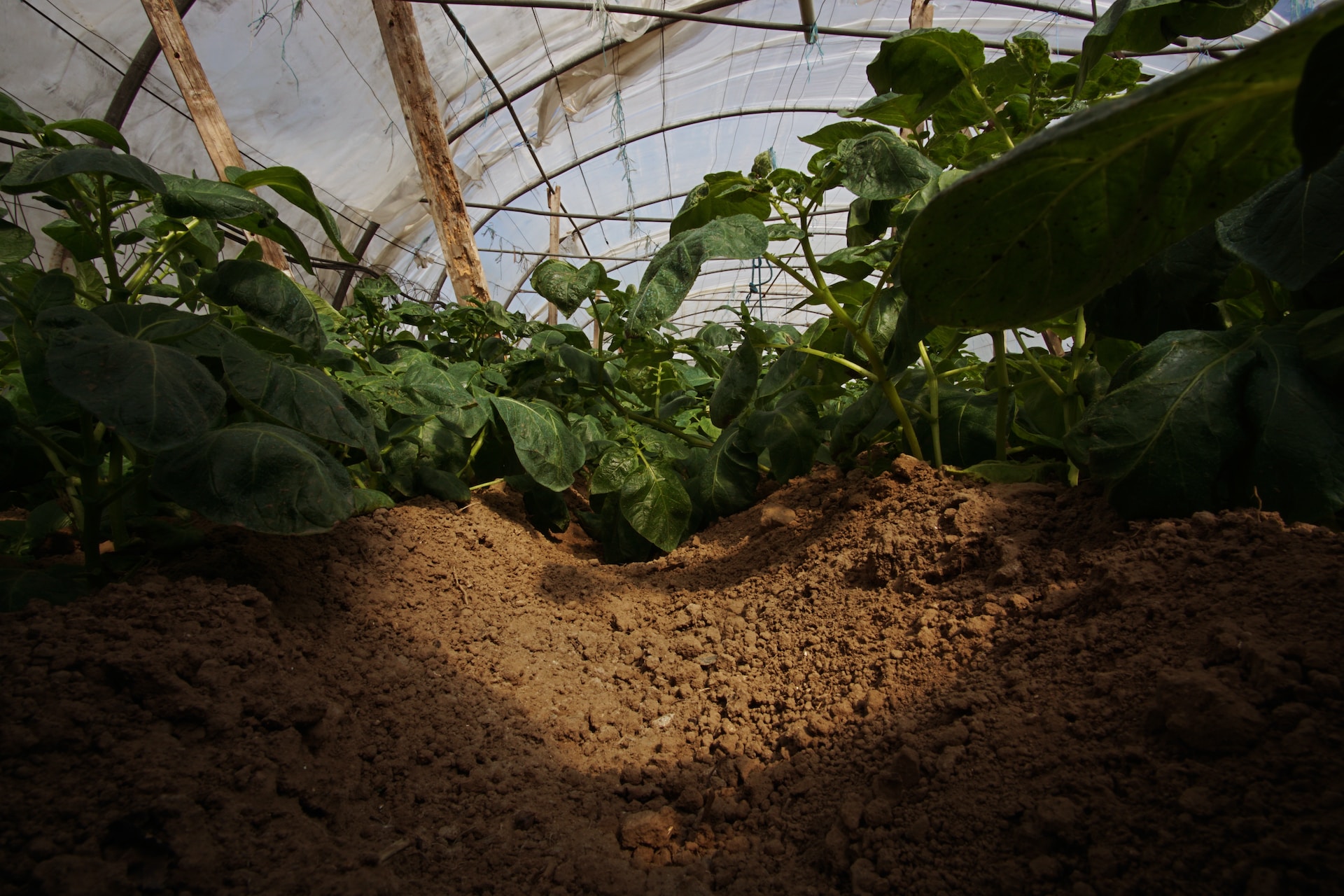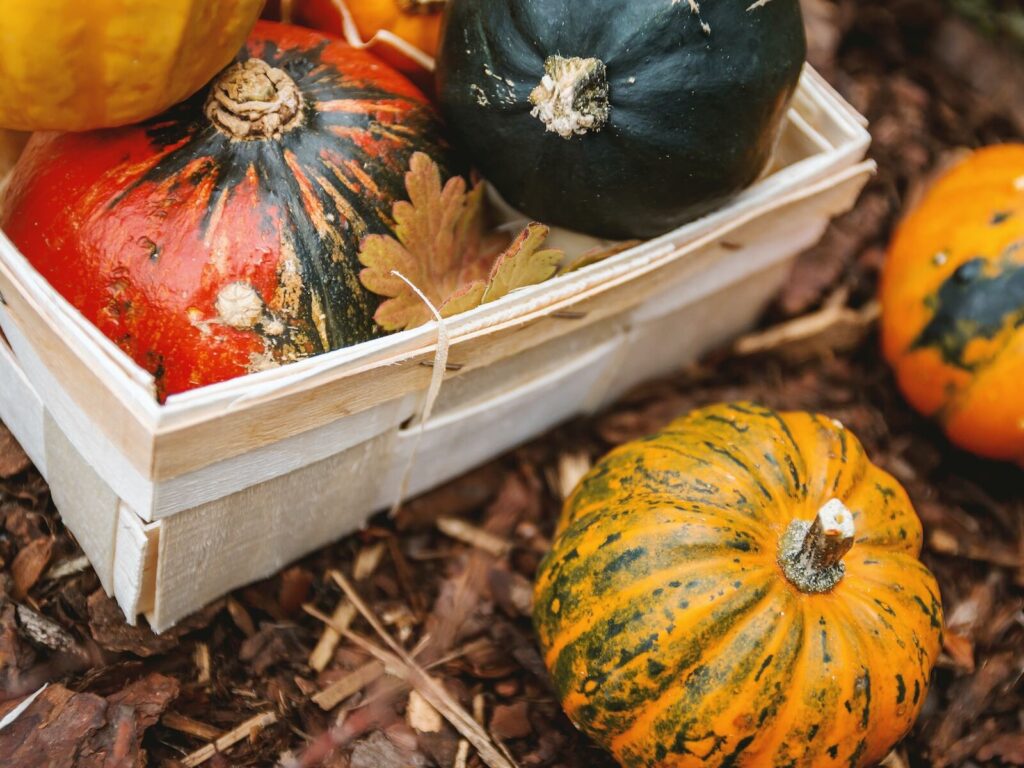When nature’s palette transforms into a breathtaking display of warm hues and bountiful harvests, and the vibrant colors of summer begin to fade, there’s no need to bid farewell to your garden. Instead, embrace the magic of the fall season by embarking on an exciting journey of fall planting and creating a stunning fall garden.
Fall gardening opens up a whole new realm of possibilities, and understanding what to plant in the fall is key to maximizing the potential of your garden. With the autumn breeze gently whispering through the foliage, it’s time to explore the wonders of fall planting and design a landscape that thrives during this enchanting season. So, let’s roll up our sleeves, grab our trowels, and discover the magic of planting in the fall to create a lush fall garden filled with an array of delightful fall plants.
The Importance of Planning Ahead for a Fall Garden
As the warmth of summer envelopes us and the days grow longer, it might seem too early to think about fall gardening. After all, we are busy tending to the flourishing plants of summer, relishing in the bountiful harvests of tomatoes, peppers, and cucumbers. However, seasoned gardeners know that the key to a successful and abundant fall garden lies in the art of planning ahead.
Late July to early August marks the ideal time to start envisioning your fall garden. While it may feel like you have all the time in the world, the fall planting season sneaks up on us quicker than the turning of leaves. By seizing the opportunity to plan ahead, you grant yourself the luxury of a seamless transition from the warm-season crops of summer to the cool-season delights of fall.
The first step in this journey is to assess your garden space and identify the areas that will soon be vacated by the summer vegetables reaching maturity. By noting the spaces that will become available, you can strategize how to best utilize them for your fall garden. This approach ensures that you’re not left with empty patches, but instead, have a well-thought-out layout for your new plantings.
Another critical aspect of planning ahead is selecting the right vegetables for your fall garden. Not all plants thrive in cooler temperatures, and some require longer growing periods. By researching and choosing suitable cool-season crops during late July to early August, you grant yourself ample time to acquire seeds or transplants and prepare the soil for their arrival.
Planning ahead also allows you to consider succession planting, a technique that involves staggering the sowing of seeds to ensure a continuous harvest. By sowing seeds at different intervals, you create a steady stream of fresh produce throughout the fall season. This practice not only maximizes your garden’s productivity but also ensures that you can indulge in your favorite fall vegetables for a more extended period.
The Benefits of Planting in the Fall

When most people think of gardening, the vibrant blooms and abundant harvests of spring and summer often come to mind. However, savvy gardeners understand that the magic of gardening doesn’t have to end when the days grow shorter and the air becomes crisper. Planting in the fall opens up a whole new world of possibilities and brings with it a plethora of benefits, allowing you to savor the joys of gardening well into the cooler months.
Let’s explore the numerous advantages of extending the harvest season by planting in the fall:
Cooler Temperatures and Improved Growing Conditions
- Fall’s cooler temperatures provide a more pleasant environment for both gardeners and plants alike.
- Cooler weather reduces stress on plants, resulting in healthier growth and improved crop quality.
- The soil retains more moisture in the fall, promoting better water retention and reducing the need for frequent watering.
Fewer Pests and Diseases
- Insects and pests that thrive in the warm summer months tend to diminish as fall approaches, leading to a decrease in pest-related issues.
- The risk of diseases, such as powdery mildew and fungal infections, is also reduced in cooler temperatures, allowing plants to thrive with less intervention.
Abundance of Cool-Season Crops
- Fall is the perfect time to grow a wide range of cool-season crops that thrive in the milder temperatures, offering a diverse array of vegetables for your harvest.
- Leafy greens like kale, spinach, and lettuce reach their peak flavor and texture in cooler weather, making them ideal choices for fall planting.
Succession Planting and Continuous Harvest
- By planting in the fall, you can implement succession planting, staggering the sowing of seeds to ensure a continuous harvest.
- Harvesting crops throughout the fall months prolongs the enjoyment of fresh produce, extending the bounty of your garden.
Seasonal Delights and Unique Flavors
- Some crops develop richer flavors and sweeter tastes when exposed to cooler temperatures, providing unique culinary delights for your table.
- Root vegetables, like carrots and parsnips, sweeten as they mature in the cool soil, offering a delightful treat for your taste buds.
Preservation and Storage Options
- The fall harvest presents opportunities for preserving your produce through canning, pickling, and freezing, ensuring a supply of homegrown goodness during the winter months.
- Cool-season crops, such as cabbage and carrots, have excellent storage potential, allowing you to enjoy your garden’s bounty long after the growing season ends.
Gardening Enjoyment and Satisfaction
- Planting in the fall extends the joy of gardening, providing a meaningful and rewarding pastime throughout the year.
- The act of nurturing your garden during the fall season offers a sense of accomplishment and connection with nature.
Related Post: 10 Easiest Vegetables to Grow (If You’re New to Gardening)
Choosing the Right Vegetables for Fall

When planning your fall garden, one of the most crucial steps is selecting the right vegetables that thrive in cooler temperatures and shorter daylight hours. Fortunately, there is a wide variety of cool-season crops perfectly suited for fall gardening. These plants not only tolerate the chillier weather but also develop improved flavors and textures, making them a delightful addition to your autumn harvest.
Leafy Greens
- Kale: A nutritious and versatile green that withstands cold temperatures and sweetens with frost.
- Spinach: Quick to mature, providing tender and nutrient-rich leaves for salads and cooking.
- Asian Greens (Pak/Bak Choi): A range of flavorful greens that add a hint of spiciness to your dishes.
- Arugula: A peppery green that adds a zesty kick to salads and sandwiches.
- Lettuce: Numerous varieties are available, offering a spectrum of colors, textures, and flavors.
- Collards: Nutritious and heat-tolerant greens that thrive in the cool fall weather.
Cruciferous Vegetables
- Cauliflower: A versatile vegetable that benefits from the cool temperatures of fall.
- Cabbage: Comes in different shapes and colors, perfect for slaws, sauerkraut, and soups.
- Broccoli: Grows well in the cooler months, providing nutritious florets for your table.
- Brussels Sprouts: Develops a sweeter flavor after exposure to colder temperatures.
Root Vegetables
- Beets: Rich in color and flavor, beets can be harvested young for tender baby beets or allowed to mature for larger roots.
- Carrots: Sweeten as they mature in the cool soil, offering a delicious harvest for fall.
- Turnips: A fast-growing root vegetable with both edible greens and flavorful roots.
- Celeriac: Also known as celery root, it has a unique and savory taste, ideal for soups and stews.
- Rutabaga: A hardy root vegetable with a slightly sweet and nutty flavor.
Radishes, Parsnips, and Peas
- Radishes: Quick-growing and easy to cultivate, providing a peppery crunch to your salads.
- Parsnips: Sweeten with frost, becoming tender and flavorful for a fall harvest.
- Peas: Certain varieties can be planted for fall growing, offering fresh peas in the cooler season.
| Vegetable | Flavor Profile | Uses |
| Kale | Earthy, slightly bitter | Salads, smoothies, sautés, and soups |
| Spinach | Mild and tender | Salads, quiches, and sautés |
| Asian Greens | Spicy and bold | Varied (depending on the type) |
| Arugula | Peppery and pungent | Salads, pizzas, and sandwiches |
| Lettuce | Varied (depending on type) | Salads, wraps, and burgers |
| Collards | Slightly bitter | Braised, steamed, or used in soups |
| Cauliflower | Mild and nutty | Roasted, steamed, or used in soups |
| Cabbage | Crisp and slightly sweet | Slaws, sauerkraut, and stir-fries |
| Broccoli | Nutty and earthy | Steamed, roasted, or added to stir-fries |
| Brussels Sprouts | Sweet and nutty | Roasted, sautéed, or steamed |
| Beets | Sweet and earthy | Roasted, boiled, or used in salads |
| Carrots | Sweet and crunchy | Raw, roasted, or added to stews and soups |
| Turnips | Mild and slightly sweet | Roasted, mashed, or used in soups and stews |
| Celeriac | Savory and nutty | Mashed, roasted, or used in soups |
| Rutabaga | Sweet and nutty | Mashed, roasted, or used in soups |
| Radishes | Peppery and crunchy | Salads, pickles, and garnishes |
| Spinach | Sweet and nutty | Roasted, mashed, or used in soups |
Creating Your Fall Garden Plan

To plan a successful fall garden, it’s essential to consider two key factors: the first fall frost date in your region and the days to maturity for each vegetable. By understanding these factors, you can ensure that your crops have enough time to grow and mature before the first frost hits.
Determine the First Fall Frost Date: Research the average date of the first fall frost in your area. This date will serve as a crucial marker for the end of the growing season, as most plants cannot withstand freezing temperatures.
Calculate Days to Maturity: Check the seed packets or plant labels for the days to maturity information for the vegetables you want to grow. Days to maturity indicate the time it takes for a plant to grow from seed to harvest.
Work Backwards: Count backward from the first fall frost date to determine the latest date you can sow each crop and still have enough time for it to reach maturity. This ensures you don’t end up with underdeveloped vegetables when the frost arrives.
Create a Sample Fall Garden Layout: Based on the frost date and days to maturity, design a garden layout that optimizes the available space and maximizes your harvest.
Sample Fall Garden Layout
- Kale (Days to Maturity: 55): Plant in early August for a harvest before the first frost.
- Carrots (Days to Maturity: 70): Plant in late July to early August for a fall harvest.
- Spinach (Days to Maturity: 45): Plant in early August for a quick and tender harvest.
- Broccoli (Days to Maturity: 80): Start seeds indoors in late June, then transplant outdoors in early August for a fall harvest.
- Lettuce (Days to Maturity: 40): Plant in early August for a crisp and fresh fall salad supply.
- Radishes (Days to Maturity: 25): Plant in early to mid-August for a fast and peppery addition to your meals.
By following this fall garden plan, you’ll have a diverse and abundant harvest in the cooler months. Remember to adjust the planting dates based on your specific frost date and the days to maturity for the vegetables you choose. With proper planning, your fall garden will thrive, and you’ll enjoy the rewards of fall planting and gardening.
Preparing the Garden Beds
Preparing your garden beds is a crucial step in ensuring the success of your fall planting and gardening endeavors. As you transition from summer to fall, take the time to care for your soil and create an optimal environment for your fall crops.
Remove Previous Plant Debris: Clear out any remnants of the summer crops that have reached maturity. Removing old plant debris helps minimize the risk of pests and diseases lingering in the soil and affecting your new plants.
Rotate Crops: Practice crop rotation by planting different vegetables in the spots where their predecessors grew. Rotating crops helps break the life cycle of pests and prevents soil depletion of specific nutrients.
Add Compost or Manure: Replenish the soil with organic matter by adding compost or well-rotted manure. These amendments boost soil fertility, improve water retention, and enhance the overall health of your plants.
Fertilize the Soil: Provide your fall crops with essential nutrients by fertilizing the soil.
Consider these tips for fertilizing in preparation for fall planting:
- Use a balanced fertilizer: Choose a fertilizer with an equal proportion of nitrogen, phosphorus, and potassium (e.g., 10-10-10).
- Apply fertilizer before planting: Work the fertilizer into the soil a few weeks before planting to ensure its even distribution and availability to the plants.
- Side-dress with fertilizer: For heavy feeders like cabbage or broccoli, consider side-dressing with fertilizer during their growth to support their nutritional needs.
Protecting Your Fall Crops

It’s essential to safeguard your young crops from the potential damage of frost. Frost protection becomes paramount to ensure your plants continue to thrive even as the temperatures drop. Employing various techniques can help shield your vulnerable plants from the chill.
Frost Protection for Tender Crops: Tender crops, such as tomatoes and peppers, are highly susceptible to frost damage. As the first frost approaches, consider using row covers, cold frames, or straw bales to shield these delicate plants from freezing temperatures.
Row Covers and Cold Frames: Row covers are lightweight, breathable fabrics that can be draped over your plants, creating a protective barrier against frost. Cold frames, on the other hand, are small, transparent structures that trap heat and provide an insulated environment for your crops. Both options are effective in preserving the warmth around your plants and safeguarding them from freezing temperatures.
Straw Bales: In regions with colder climates, strategically placed straw bales can serve as an effective windbreak and insulator. By surrounding your tender crops with straw bales, you create a sheltered microclimate, helping to keep the cold at bay.
For hot climates, additional precautions are necessary to cool the soil and prevent soil crust, as late summer plantings are often vulnerable to hard soil crust over the seeds.
Cool the Soil: To cool the soil, first water it thoroughly and then cover it with a few inches of straw. After a few days, remove the straw and sow your seeds in the now cooler soil. Once the plants start growing, replace the straw with mulch to retain the cooler temperature.
Prevent Soil Crust: In hot climates, consider using a light mulch of compost or potting soil over the seed row to prevent the formation of a hard soil crust. This ensures that seeds of lettuce, peas, and spinach, which do not germinate well in temperatures above 85°F, have a favorable environment for germination.
Final Thoughts
Fall gardening offers a plethora of benefits, from cooler temperatures and moister soil to an abundance of delicious cool-season crops. By planning ahead and starting your fall garden in late July to early August, you set yourself up for a successful and rewarding harvest season. Embrace the opportunity to extend your gardening joy into the fall, savoring the flavors of kale, spinach, carrots, and more. Don’t miss out on the delights of fall planting; it’s time to dig in, plant with enthusiasm, and create your own fall oasis. Happy gardening!

